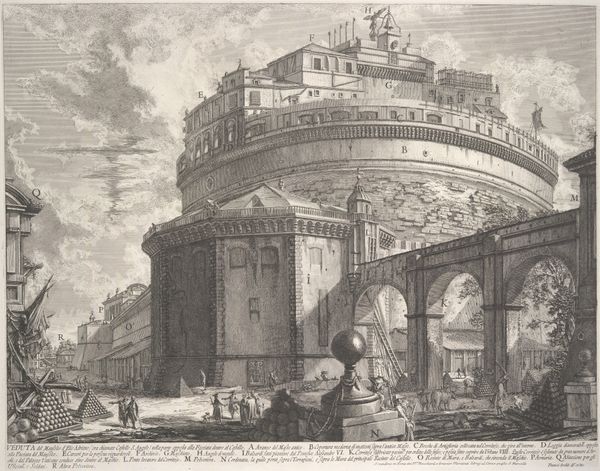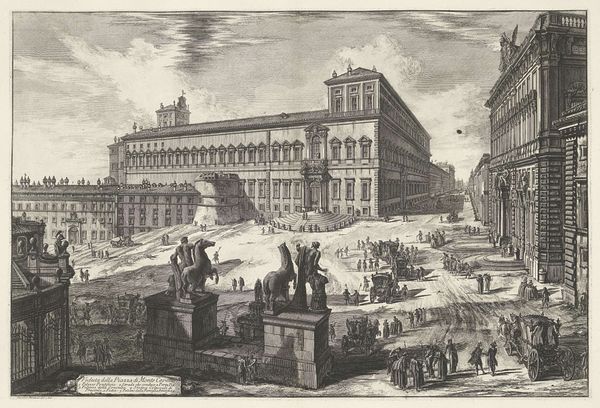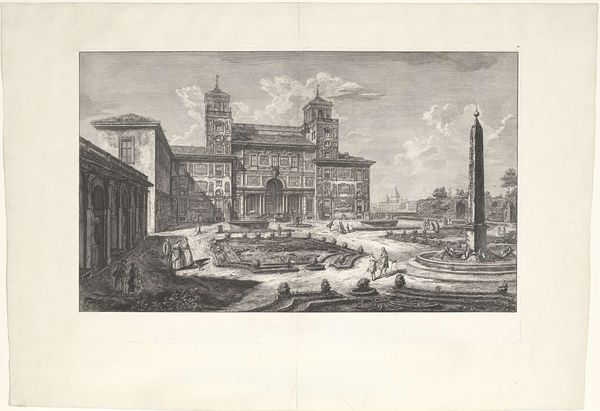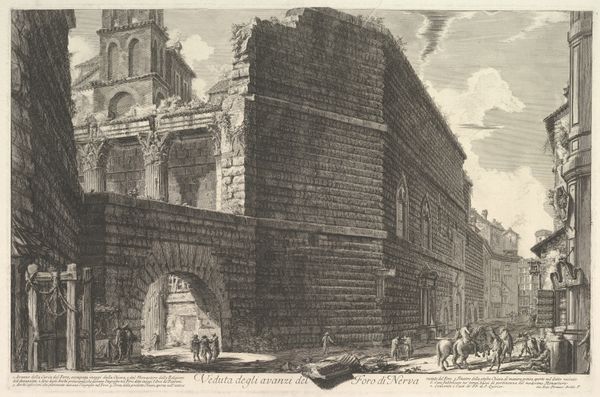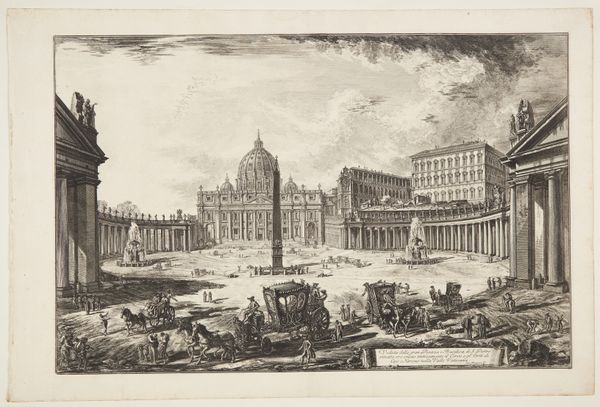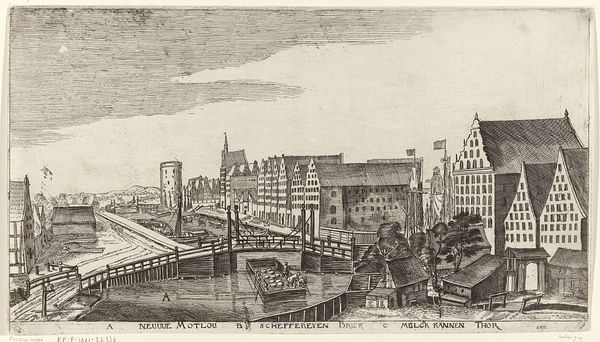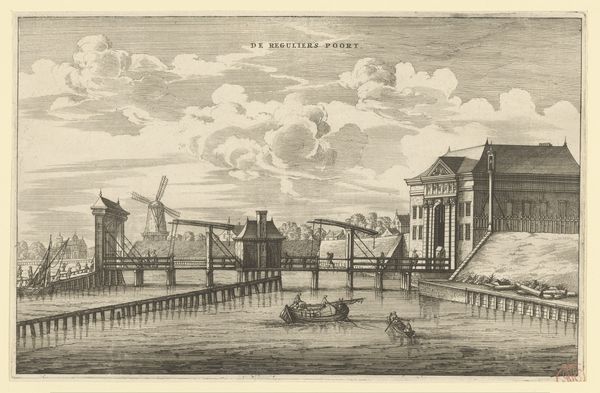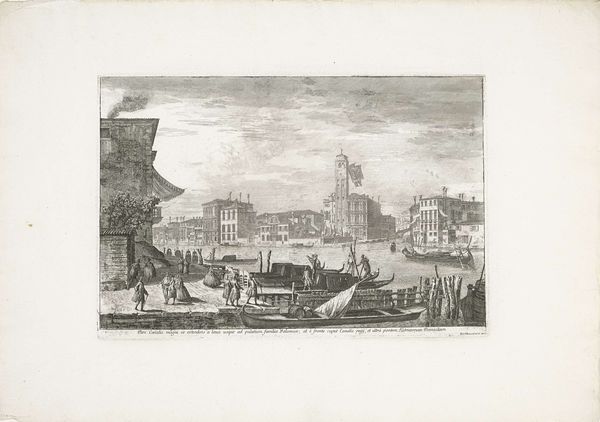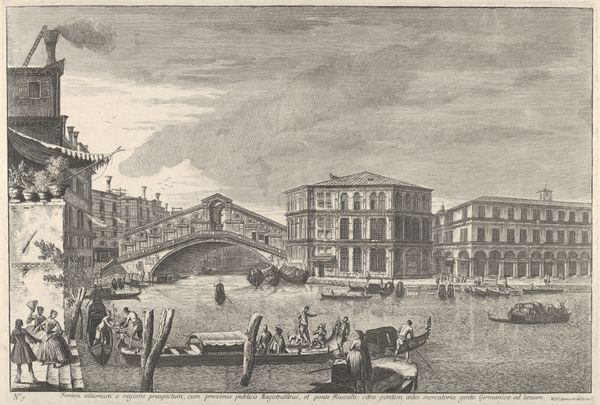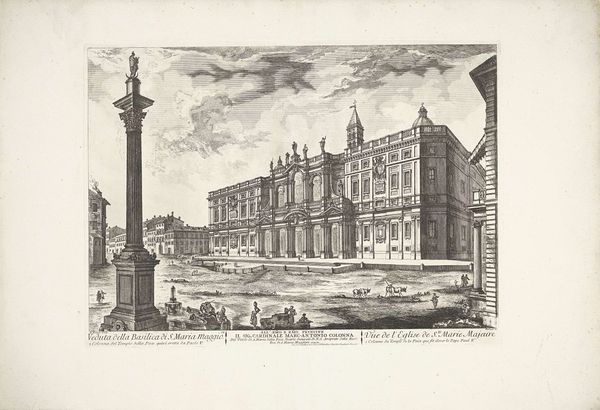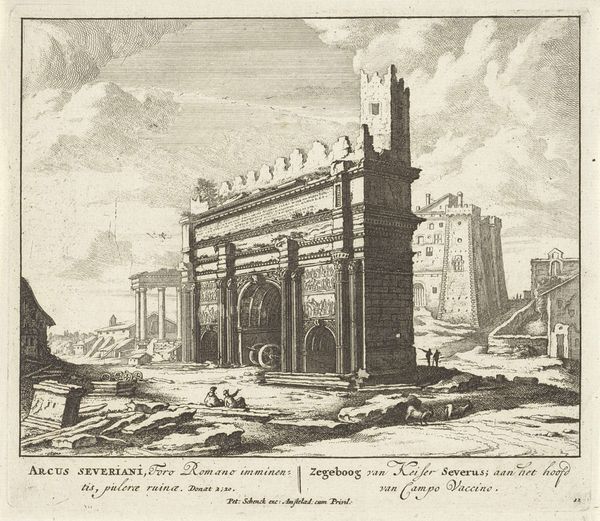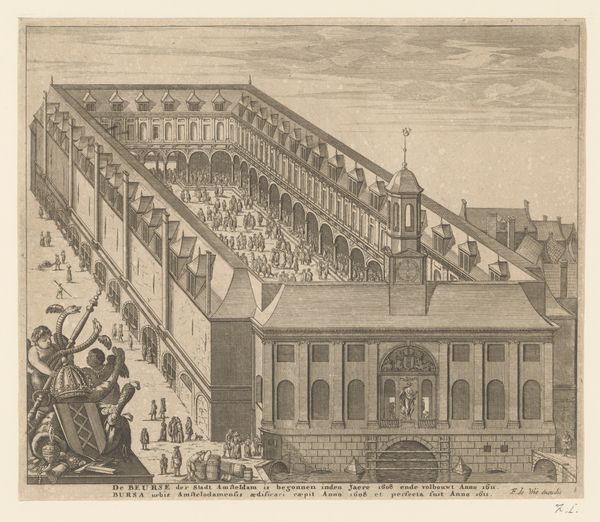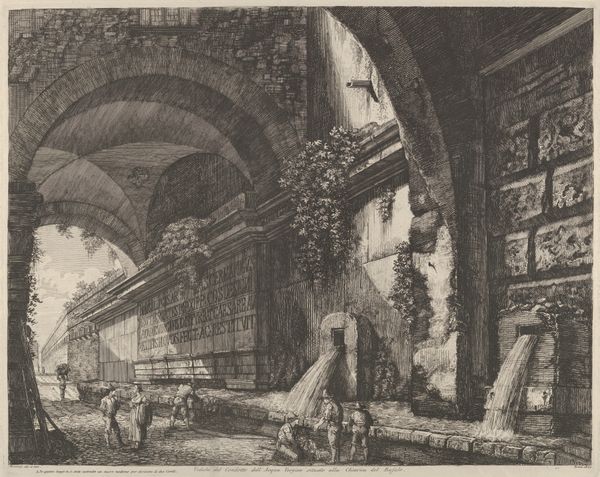
print, etching, engraving, architecture
#
neoclacissism
# print
#
etching
#
landscape
#
perspective
#
cityscape
#
history-painting
#
engraving
#
architecture
#
realism
Dimensions: height 373 mm, width 577 mm
Copyright: Rijks Museum: Open Domain
Editor: This is Luigi Rossini's etching "De Zuil van Phocas op het Forum Romanum" from 1822, capturing the Roman Forum. I’m struck by the density of detail, particularly in rendering the ruins. What historical context do you see informing Rossini's choice of subject and his technique here? Curator: Rossini’s work, created during a period of fervent Neoclassicism, is deeply entwined with the rediscovery and idealization of antiquity. But it’s also happening during significant political shifts in Europe. The focus on Roman ruins, particularly those within the Forum, speaks to the era’s fascination with civic virtue and imperial power, almost like an archeological manifest of Roman ideals for 19th century governance and urbanism. Notice how the print emphasizes perspective, placing viewers in a specific relationship to the Forum, one of perhaps reverence or aspiration. What purpose does a work like this serve for its audience? Editor: It seems like it’s aiming to be more than just documentation. Maybe it’s promoting a specific image of Rome or Roman history? It almost feels propagandistic. Curator: Precisely. Prints like this were widely circulated. Think of them as visual arguments. By focusing on these specific monuments within the Forum, Rossini's not just depicting a scene; he's participating in a dialogue about Rome’s legacy and how that legacy might inform contemporary society. Consider also how museums and burgeoning public art collections at the time shaped these views and access to history itself. Does knowing that change how you see it? Editor: It does! The piece is more politically charged than I initially realized. It shows how images of the past can actively shape ideologies in the present. Curator: Exactly. The choice of what to depict, how to depict it, and even how these images are disseminated, becomes a powerful form of rhetoric. Understanding the print's circulation and reception unlocks another layer of interpretation. Editor: I’ve never thought about classical scenes as being intertwined with 19th century ideologies. I’ll have to rethink how I understand this relationship in other art, as well. Thanks!
Comments
No comments
Be the first to comment and join the conversation on the ultimate creative platform.
